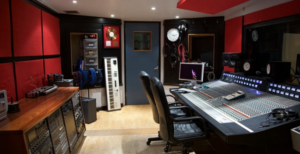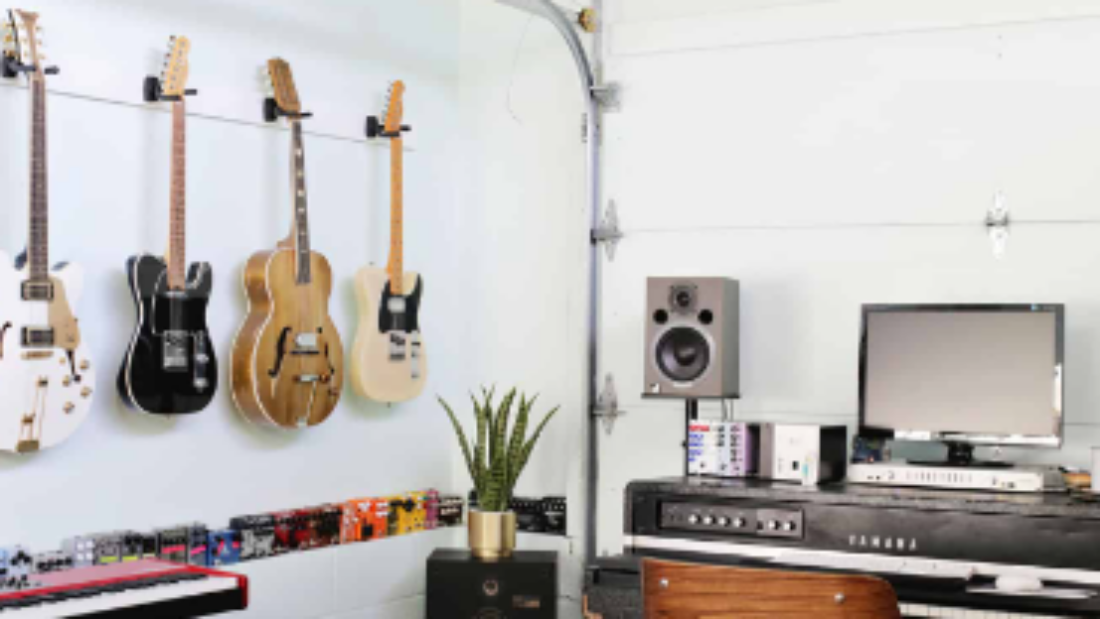|
Getting your Trinity Audio player ready...
|
A home studio is generally cheaper than a commercial studio, especially if you don’t plan to record vocals or play live instruments. If you’re serious about becoming a musician, you might even consider buying a new computer to run software that helps you produce quality sounds.
You can build a DIY home studio at little expense using only basic tools and household items. The good thing about having your home studio is that you won’t need to pay any royalties to other musicians whose songs you sample. Here’s some useful information to guide you through setting up a home studio.
Build Your Own Studio Monitor System 
The first part of the kit to buy is a mixing board. Once you have it, you should be able to get most, if not all, of the equipment for free or very cheap. You will also want to invest in a set of headphones with an external microphone input (this may be built into the mixer).
Get a Computer
If you’re going to use recording software, you’ll need a compatible operating system. I’m using Windows 7 64-bit as my primary computer. Other systems include Mac OS X 10.5.7, and Linux Mint 9. In addition to your operating system, you should purchase a copy of Adobe Audition 3, which works well with a lot of affordable microphones and audio interface models.
Audio Interface
If you go this route, you’ll be spending $100-$500 on your audio interface depending on what features you want. Most professional studios have more expensive interfaces than this, but they do so because they often double as drum machines, MIDI controllers, and sometimes computers too. However, with a low-price audio interface like the Focusrite Scarlett 2i4 USB Audio Interface, you’ll just need one port to plug your guitar directly into. Many cheaper models are mono, meaning you’d need two ports to have both left and right channels. This isn’t a problem since many effects pedals work in stereo mode.
Microphones
When choosing your microphones, there are three main considerations: cost, quality, and reliability. For the sake of simplicity, we’ll focus on cost here. A great place to start is by looking at online auction sites such as eBay. Buyer beware! Some sellers claim their product is brand new when it was second-hand. It is a seller’s responsibility to disclose its condition.
Another option would be to visit local music stores. They usually carry inexpensive, high-quality microphones from companies such as Blue Microphone, AKG, Shure, Rode, Sennheiser, etc. Another alternative would be to rent a condenser mic from your local sound company.
When searching for mics, avoid those that come with prerecorded samples embedded into them. These mics are called “preamps” and they were designed originally for broadcast applications. Preamps are notorious for being extremely sensitive and not performing well in noisy environments.
To sum it up: choose a small, reliable microphone with a wide frequency range and a good dynamic range; something along the lines of the Sony CMT 463U. A condenser microphone will give you better detail and clarity, but a ribbon microphone is easier to handle. You can always add a pop filter later for extra protection.
Effects Pedals
There are several ways to approach building a pedal board. One way would be to buy individual effects units and then connect them via patch cables to a dedicated channel on your sound card. This method is fine if you know exactly what you want and how much money you want to spend. An alternative would be to buy an all-in-one unit such as the Digi tech RP300 or RP700 Rack Power Controller. Both offer similar functionality at a lower price point.
Recording Software
Finally, consider what kind of recording software you want to use. There are two options available: standalone programs and plugin hosts. Standalone programs, such as Ableton Live (which comes free with every Mac), let you create custom tracks within the program, whereas a plugin host lets you load third-party plugins inside your DAW. My personal preference is Ableton since it has a large community behind it. Plugins are also readily available through sites like Reverberation where people list the plugins they’ve used for various projects.
The Bottom Line.
Once you have put together your equipment, it’s time to take the gear home and get started making some music. Don’t worry if you don’t have any experience yet. You won’t learn everything overnight. It’s best to start simple and move to more complex tasks once you feel comfortable with the basics. The bottom line is that you only need a few pieces of equipment to make awesome-sounding music.

